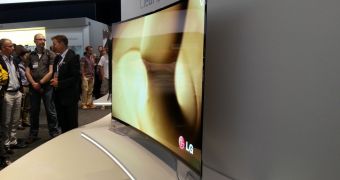Inkjet printers won't be able to create OLED displays any time soon, but the base technology, the underlying concept, could actually become the key to next-generation, affordable OLED production.
This, at least, is what manufacturing equipment maker Kateeva believes, having come up with a way to offset most of the drawbacks of the technique.
Inkjet printers have been a favorite idea of OLED display makers for a long time, but actually using the concept has proven problematic.
Mostly it boils down to short printed material lifetime, due to printing being a relatively dirty process. It's also been hard to integrate the idea into mass production.
Thus, a vacuum chamber process is used instead, during which OLED pixels are made by stacking thin films of organic materials on glass, or some other surface. Condensed vapors of various materials are used to deposit the layers.
Finally, a fine metal stencil, called a “shadow mask,” sits atop the surface and ensures precision and uniform patterns.
The mask is the reason for the price of OLED though, because it wastes a lot of material (which ends up coating the mask and walls of the vacuum chamber instead of the display substrate). Also, when placing and removing the mask, defect-causing particles can slip in.
With inkjet printing, the mask is unnecessary, but the process is pretty dirty itself. This is where Kateeva comes in.
Kateeva says it can reduce particle contamination by a factor of 10 compared to the conventional, mark process, via mechanical systems that sweep away dust and reduce ambient turbulence. An all-nitrogen process chamber is used too, removing the other issue: exposure to air and moisture.
If the idea catches on, and no faults are found, inkjet printing technology could be included in existing manufacturing lines. For us normal people, it means that OLED could reach the prices of LCDs in a few years instead of a decade or more.

 14 DAY TRIAL //
14 DAY TRIAL //